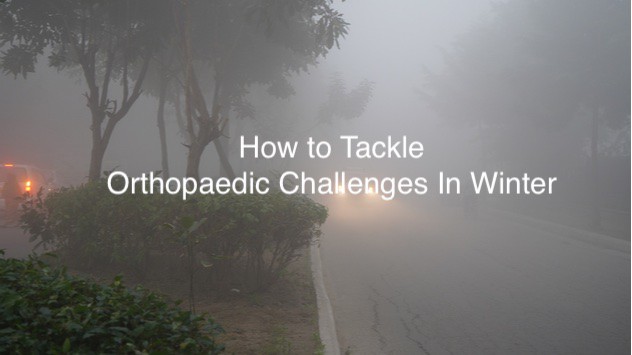
Posted by: Admin | 2 COMMENTS
Winter is here! With the sun shifting towards the southern hemisphere, North India anticipates cold waves due to reduced sun exposure. This may lead to an increase in orthopaedic issues over the next two months. Dr. Priyadarshi Amit, Senior Consultant, Department of Orthopaedics and Joint Replacement, Amrita Hospital, Faridabad, discusses various orthopaedic challenges and coping strategies.
(a) Worsening Arthritis Pain / Joint Pain
Inflammatory arthritis sufferers experience increased pain and swollen joints during the winter. Those with osteoarthritis experience worsened symptoms due to lower temperatures and reduced tissue water content, restricting joint movement. Winter may also trigger pain in those with past injuries. Individuals must stay warm using heaters, layered clothing, and woollen wear to alleviate pain.
(b) Vitamin D Deficiency
Due to shorter daylight hours, people stay indoors during the winter, shifting from outdoor to indoor sports, with even children preferring video games. This reduces sun exposure, which is crucial for Vitamin D production. Vitamin D deficiency negatively impacts bone calcium levels, leading to generalised body pain. It’s vital to spend time outdoors or, if not possible, take Vitamin D supplements and consume calcium-rich foods like dairy products.
(c) Inactivity
During winter, people often avoid socialising and opt to remain cuddled up in blankets, leading to reduced physical activity, weight gain, and muscle and joint stiffness. To counter this, they can engage in gym workouts, practice yoga at home with the guidance of instructors, and play indoor sports like table tennis and badminton to keep muscles and joints active.
(d) Road Traffic Accident Due to Poor Visibility
Winter means shorter days, longer nights, and foggy conditions, increasing the risk of road traffic accidents (RTAs). Unfortunately, not all streets have adequate lighting, posing challenges for drivers and riders. This leads to a rise in RTAs during the winter, causing injuries ranging from minor to life-threatening. To address this, drivers should control their speed, use suitable lights, including fog lights, and avoid high beams on busy highways to prevent vision impairment for oncoming vehicles.
(e) Slipping on Snow Causing Orthopaedic Injuries (Shovelling Injuries)
Snow is not common in Delhi. However, slipping on snow in regions like Kashmir or Himachal can lead to orthopaedic injuries, particularly ankle, wrist, and hip fractures. Wearing suitable shoes for snowy areas is crucial, and immediate medical attention is necessary if injuries occur. One should use salts, sand, or grit over snow. Applying anti-snow padding to car tyres prevents slipping. For shovelling injuries and muscle spasms, painkillers, muscle relaxants, and hot pads may be needed.
(f) Injuries Caused by Winter Sports
Winter sports like skiing and ice hockey, popular among Delhi residents visiting Kashmir, carry the risk of injuries. Fractures, dislocations, ankle, wrist, knee ligament injuries, and shoulder dislocations are common. Adequate warm-up, muscle relaxant exercises, proprioceptive exercises, and joint protection padding are essential to preventing injuries. In case of mishaps, our 24/7 helpdesk can assist and arrange airlifting to hospitals. First aid is typically available on-site.
Dr Priyadarshi Amit
Senior Consultant Orthopaedic Surgeon
2 thoughts on "How to Tackle Orthopaedic Challenges in Winter"
Leave a Reply
Related Blogs









I appreciate the work you did on this and thank you for all the wonderful stuff.
Hi, I truly enjoy your writing and would like to stay in touch with you regarding your posts on AOL. I’m looking forward to seeing you. I need an expert in this field to solve my problem. Maybe you are that person.